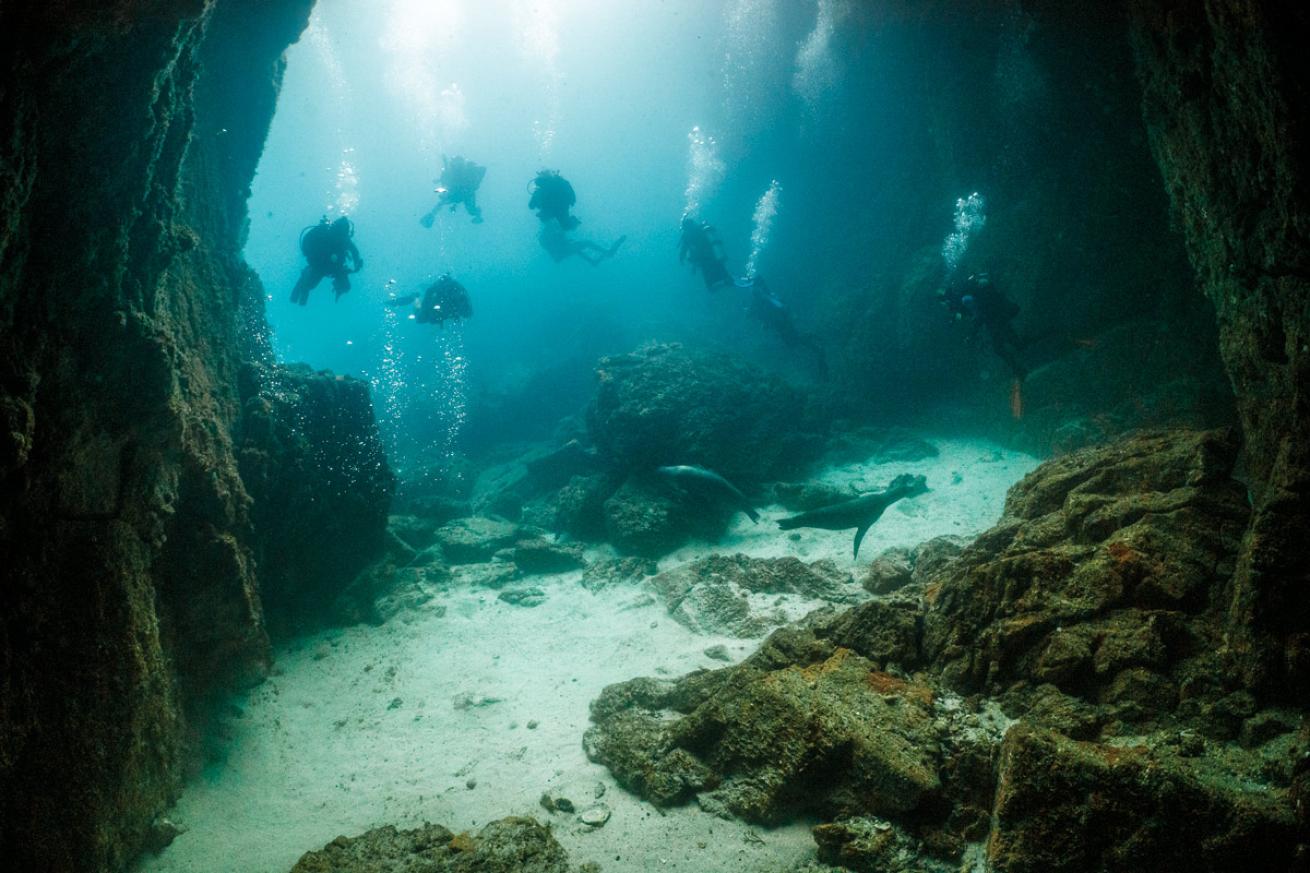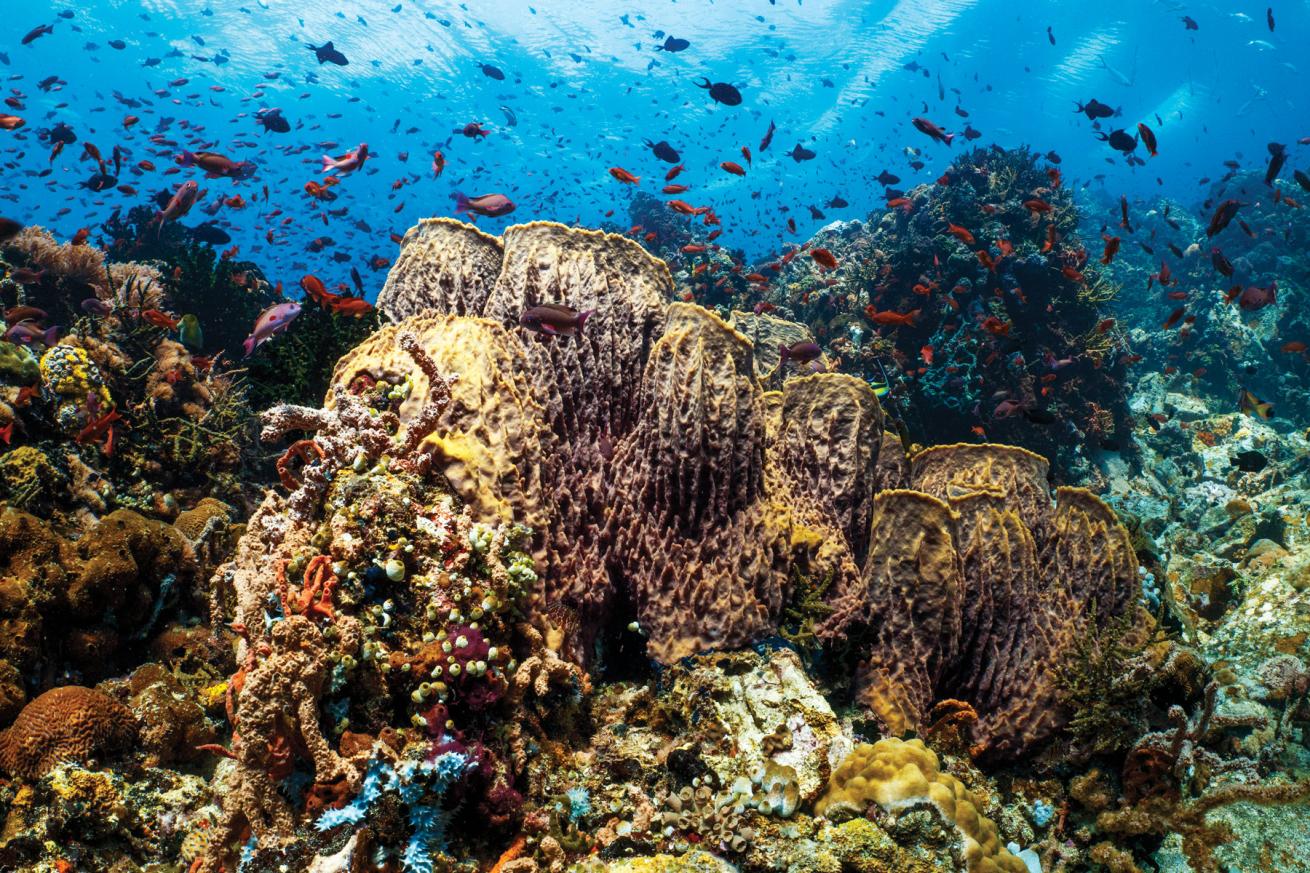Buddy 101: How to Dive With Someone New

Annie CrawleySea lions zip around divers in the Sea of Cortez. When diving with a new buddy, watch your ascent rates while following the fun.
The ocean covers 70 percent of our planet, and breathing underwater unites divers worldwide. Diving opportunities exist from the Arctic to Antarctica and everywhere in between, including in lakes, rivers, and streams.
Although land has been divided into 195 countries, underwater we all speak the same universal language and practice standardized safe diving protocols. It’s incredible that we can learn to dive anywhere and then use our training to explore the world. Because we often travel to dive or meet others with whom we want to explore the underwater world, it’s important to understand how to safely approach diving with a new buddy, whether at home or abroad.
When diving with a new buddy or operation, prioritize safety and effective communication. Here are some tips to consider.
Related Reading: The Art of Breathing Underwater
Talk It Out
Introduce yourself and your equipment. Talk to your buddy before the dive. Share your favorite dive story and experience level. Discuss the kind of dives you like to make to gauge comfort levels and capabilities.
Walk your new buddy through a predive check of your assembled equipment. This is different from the buddy check you do before getting into the water. Review each buddy’s gear configuration, signaling devices and diving idiosyncrasies, such as slow equalization, physical limitations or new equipment considerations.
Underwater Communication
Although reviewing hand signals and air consumption might seem like a no-brainer, it’s really important to communicate with a new buddy because people use a variety of methods to signal air consumption.
When I learned cave diving, I used one hand to show air by counting one through five with fingers and thumb, then turned my hand 90 degrees to signal six through nine. I still use these hand signals today, even when I’m not in a cave.
It’s a good idea to stay vigilant in monitoring air consumption with a new buddy and communicate every change of 500 psi or 40 bar. If you do this, there will be no surprises if someone is using their air quickly. It is natural to be more nervous with a new buddy, so you (or your buddy) might breathe faster than normal. You can always adjust a dive profile to a shallower depth if someone has a higher rate of air consumption.

Annie CrawleyIn warm waters, such as in the Philippines, there may be strong currents, upwellings and changing conditions. Always be vigilant of conditions and stay within two seconds of your buddy.
Know Your Plan
Review the dive site map and create a plan. Include depth, duration and dive goals such as photography, fish counting, picking up rubbish or looking for unique critters. Ensure you both have a clear understanding of the dive plan, including who will lead the dive.
Depending on the location, conditions and visibility can vary. Stay close to your buddy underwater. I really like swimming side by side with my buddy rather than in a line where the person in front has to keep their head on a swivel. It’s much easier to turn your head to the right or left to see your buddy. If they want to stop, they can signal, or you can see they are stopping.
Related Reading: Ask a Pro Photographer: How to Capture the Perfect Shot
Emergency Procedures
Agree on the hand signal you would use to abort the dive, and discuss buddy separation procedures: Search for one minute underwater, surface, reunite and decide what to do after. Review the emergency action plan for the dive site. Make sure you both know how to assist each other in case of emergency.
It’s really important that you dive with someone with similar dive goals and preferences, including time and depth limits and level of adventure or relaxation. Diving safety is paramount, and you want to look for a safety-minded buddy or dive operation. A safety-conscious buddy will prioritize their well-being and that of their dive buddy.
Effective communication and mutual understanding are crucial when diving with a new and unfamiliar buddy. If you have any concerns or uncertainties, don’t hesitate to ask questions or seek guidance from a dive professional. As you find new buddies it’s essential to have confidence in your personal diving abilities. You need to be able to plan a dive, follow that plan and respond appropriately in emergency situations. Reliability and dependability are two characteristics needed by both buddies diving independently of a dive professional. If you feel you need more training, the rescue diver course prepares divers to take care of themselves and their buddies before, during and after a dive. Be a responsible diver and always dive within your personal limits.
PRO TIP
Dive conservatively with a new buddy. It’s always best to err on the side of caution on your first experience with someone you have not dived with before. Go slow, maintain good buoyancy control and check in with each other on the dive. Carry a slate so if any confusion arises you have an alternative way to communicate.










